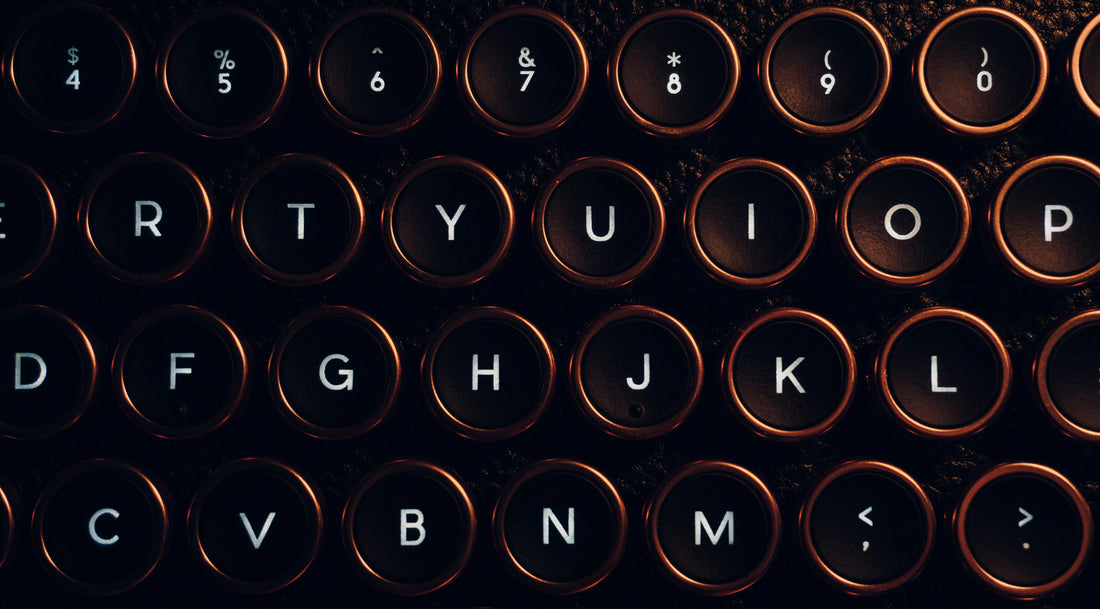
The Origins of QWERTY
Share
Ever stared at your keyboard and wondered, "Who thought this layout was a good idea?"
I mean, the letters aren’t even in alphabetical order! Instead, they’re scattered all over like someone spilled alphabet soup and just... kept it.
Well, it turns out there's a pretty wild — and totally old-school — reason behind the chaos.
Let's rewind to the 1870s.
Back then, people didn’t have laptops or gaming rigs; they had typewriters. And these early typewriters had a major design flaw: if you typed too fast, the metal arms (called "typebars") that punched the letters onto the paper would jam together.
Imagine speed-typing "speed" — and your machine literally locking up mid-word. Total buzzkill.
Enter Christopher Latham Sholes, the man behind the invention of the modern typewriter.
Sholes needed a solution. His idea? Slow people down.
Yes, seriously.
Instead of arranging the keys in an easy-to-find A-B-C order (which early designs actually did have), he and his team rearranged them to make common letter pairings harder to hit quickly.
Slower typing = fewer jams = happy typists.
Thus, the now-legendary QWERTY layout was born — named after the first six letters on the top row.
It was officially patented in 1878, and by 1893, Remington (the big player in typewriters) had adopted it for good.
From there, QWERTY spread like wildfire, and by the time computers showed up about a century later, everyone was already trained on this "weird" system.
But Wait... Couldn't We Change It?
Technically, yes!
Over the years, people have tried to design better, faster layouts.
One famous alternative is the Dvorak Simplified Keyboard, made in the 1930s. It puts the most-used letters right under your strongest fingers. It’s way more efficient... on paper.
So why don’t we all switch?
Simple: habit and momentum.
Millions of people know QWERTY. Every office, school, and tech store uses it. Teaching the whole world a new system would be like telling everyone to suddenly drive on the opposite side of the road.
Too much effort, too much confusion — so we stick with the quirky classic.
Fun Fact!
-
The word "typewriter" can be typed using only the top row of letters on a QWERTY keyboard. (Sholes may have done this on purpose to help salesmen show off!)
-
Some modern layouts, like Colemak or Workman, aim to offer a middle ground — better efficiency without the steep learning curve.
So... What’s the Bottom Line?
The keyboard you’re typing on isn’t arranged for logic or speed.
It’s arranged for 19th-century mechanical survival — keeping those old metal arms from jamming up.
In a weird way, every time you hit a key, you’re carrying a little piece of typewriter history with you. 🖋️
Sure, it's messy.
Sure, it’s not perfect.
But somehow, like the best classic inventions, it just works.
And now that you know the secret?
Next time someone grumbles about why "P" and "Q" are miles apart, you can just smile and say:
"It’s a jam-proof design from 150 years ago. You're welcome."
